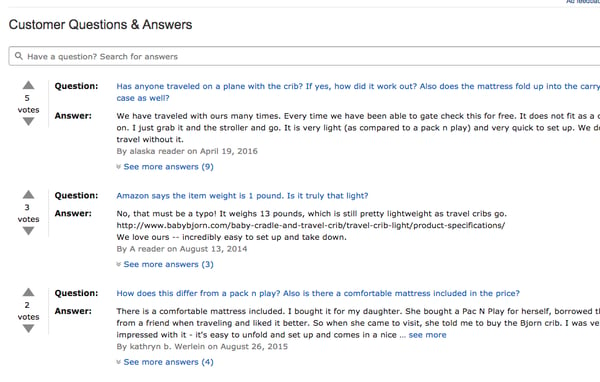I was at the Fancy Food Show yesterday and today, and spoke with a lot of gourmet food brands about Amazon. The acquisition of Whole Foods was a hot topic. Whether brands were already selling on Amazon or not, all were interested in what Amazon’s investment in this category will mean for them.
But last week we saw more movement in another category that Amazon has demonstrated an interest in disrupting: Fashion.
AMAZON PRIME WARDROBE
This new program offers subscribers the ability to select a box of clothing, one that will come with free shipping and free returns. The customer has seven days to try the items on and decide what to keep. The more items you keep, the higher discount you get on the total order.
Why, yes, it does sound a lot like existing rivals Stitchfix and Trunkclub.
Product returns in the apparel category are already problematic, and retailers and brands deal with double-digit return rates (British fashion retailer ASOS reportedly sees 40-50% returns on online orders). This program embraces the current situation, and will allow Amazon to double down on their already strong fulfillment capabilities. Amazon will track all sorts of data pertaining to the popularity and return rates of sizes, styles, and other factors, which it'll likely use to make better wholesale buying decisions and, of course, augment the selection in the company's own private label catalog.
With a high rate of returns in the apparel category, Amazon probably won’t be making much margin on each sale. However, this new program will further incentivize Prime memberships, which is the underlying motivation behind much of what Amazon does.
Great commentary here:
Also, an article on Chain Store Age made an interesting observation: “ E-commerce currently accounts for 17%-20% of total apparel sales in the U.S. Historically, when e-commerce surpasses the 20% threshold of a retail category Amazon comes in and makes a big wave because Amazon is the main beneficiary of e-commerce capturing half of all growth in online retail.“ CSA points out this first happened in media and electronics.
USER GENERATED CONTENT (AND HOW TO LEVERAGE IT)
A new study from online shoppers has found that user-generated content (UGC)--things like reviews, testimonials, and Q&As--is the preferred source of marketing information for 90% of shoppers making a purchase. This outranks all other forms of marketing, including search engines (87%) and promotional emails (79%), which respectively ranked second and third.
UGC is specifically sought out by millennials, and many respondents in the study said that UGC creates a more authentic shopping experience, and increases their purchasing confidence.
So how can brands leverage user-generated content on Amazon? Product reviews obviously are key. Customers who leave reviews with photos and videos are the purest form of gold. Seller feedback is also important content for brands, as it improves your overall seller rating, which boosts credibility while also helping in situations where you’re competing for the buy box.
UGC on Amazon also includes the Q&A section where would-be customers can crowdsource answers from other customers and the brand itself.
 Image: Q&A section on an Amazon product detail page.
Image: Q&A section on an Amazon product detail page.
Brands can further leverage user-generated content from other channels on their Amazon product pages. You might include quotes or testimonials from real customers in the product description section, or think about including images submitted by customers using the product (for example, from contests run on Instagram or Facebook) as one of the featured images on Amazon.
Wal-Mart tells tech vendors to leave Amazon's cloud
The latest in the soap opera drama between Amazon and Wal-Mart is that some tech companies have been told to stop using Amazon’s AWS cloud platform if they want to win Wal-Mart’s business. Other large retailers are reportedly requesting that service providers move away from AWS, the Wall Street Journal also stated.
Wal-Mart has also recently boosted its paid search advertising in the grocery category, well before Amazon’s acquisition of Whole Foods, bumping its paid search advertising in the grocery category to $850K from June 2016 - May 2017, compared with only $51K in the prior period. (This is entirely separate from Jet.com’s ad spend, which would mean Wal-Mart has spent even more.) Meanwhile, Amazon ranked 9th in the same time period.
It’s clear that both retail players are highly interested in this category. In terms of attracting customers, brands should pursue both platforms to benefit from the investments made by both companies.
Nike will sell directly on Amazon
Nike has entered a partnership with Amazon to sell its products directly on the latter’s platform. Previously, Nike products available on Amazon were sold by third-party sellers through the Amazon Marketplace.
Nike and many other brands have previously skirted such partnerships with Amazon, in part because of the marketplace’s inherent inability to control third-party sellers. With this partnership, Nike will get better control of how its products are displayed and sold on Amazon’s platform.
Hopefully, this means that Amazon will offer similar privileges to brand owners in the future who are frustrated with the fact that other sellers are allowed to list their products on Amazon without any significant vetting. This sometimes leads to channel conflict where a seller lists the product below MAP (at best) or counterfeit items being sold (at worst).
AMAZON MONETIZING NFL RIGHTS
Finally, Amazon continues to invest in content, paying $50 million to the NFL to stream this season's 10 Thursday night games. This type of exclusive content secures members for its Prime program, which in turn boosts sales across the whole e-commerce catalog. In addition to streaming the games, Amazon has another way to monetize this content: ads. According to CNBC, Amazon is aiming to charge $2.8 million for NFL ad packages.
That’s a wrap for this week! If you want to get more Amazon news and commentary, subscribe to our newsletter.
.png)

